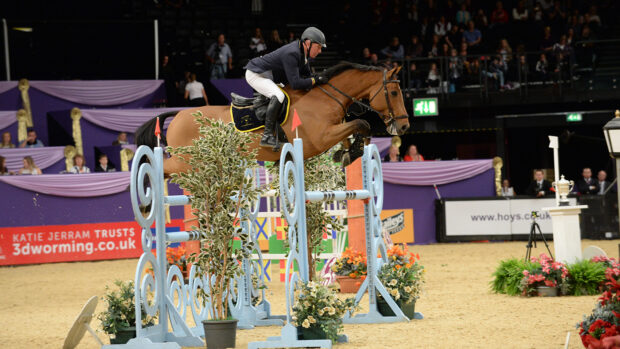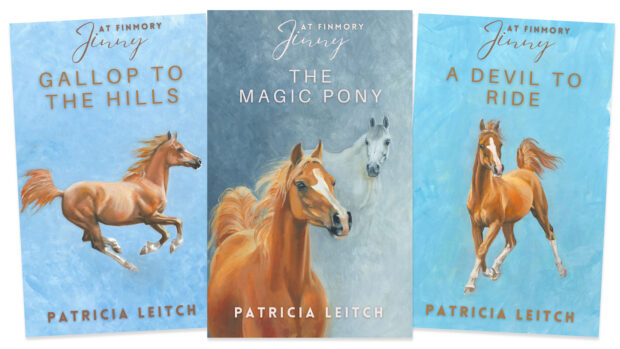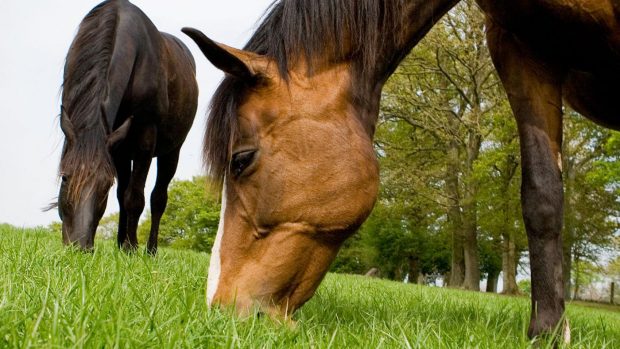- More Dorset Diaries
- A Short History of the Wellington Boot
- Horse Guards
- Free Fall
- The Jockey Club Rooms
- The Allen Illustrated Encyclopaedia of Dressage
- The General Stud Book (Volume 45)
- Getting Horses Fit
- Tipperary Tales
More Dorset Diaries
by David Edelsten Halsgrove, £12.99 (ISBN 1841144827)
This reviewer has to confess to certain bias David Edelsten has long been a valued hunting correspondent for H&H, and his chatty, accessible style makes it easy to devour chunks of his book in great gulps.
His abiding love of animals dogs, cats, horses, rabbits, pheasants, some recalcitrant sheep and a bat hanging like a smashed umbrella shimmers along every line, as does his sheer joy in the countryside about which he writes so evocatively.
He describes every season with deft passion, but the hunting chapters I warn those who do not approve of it that the final quarter . . . is devoted to hunting: at the same time, I beg them . . . to read on, he says in his foreword reveal his first love.
Perhaps if they read this book, those who do not approve may well change their minds, or at least try to understand and to respect those that do, as David Edelsten suggests. NJS
A Short History of the Wellington Boot
by Adam Edwards Hodder and Stoughton, £12.99 (ISBN 0340921382)
Adam Edwards is an unusual and amusing writer on the English countryside, covering subjects from shooting and etiquette to the vagaries of parish council and pub life. In this book, he has turned his wry humour and gimlet eye to the trusty gumboot.
While my own forebear ceremonially tied the Iron Dukes shoe buckle at the Waterloo Ball before the battle of 19 June 1815, Edwards never lets us forget that, really, the dukes name will forever be associated with the armyard. Giving it some Wellie is perhaps not the legacy his grace would have imagined.
This is a fascinating and fun history entwined with military and social anecdotes. Did anyone ever look better in a pair of Hunters than Kate Moss at Glastonbury? Did Lady Diana Spencer revive their fortunes when she posed in them for an engagement photograph?
Along with the foxes mask doorknocker and dog basket, the gumboot sits at the back door of most country farms and houses. To them may now be added Edwardss own book, to be read with a glass of whisky and your feet up, your boots left firmly in the rack. RKB
Horse Guards
by Barney White-Spunner Macmillan, £30 (ISBN 140505574X)
Weighing in at 5lb 4oz (sorry Tony, 2.3214kg), this magnificent book with its 625 pages, nearly 300 lovely illustrations and brilliant, but brilliant, maps must be the bargain of the season at £30 you cant get a refit, let alone a new set of shoes for that. It is the history of the oldest bit of our Army, the three regiments, now two, that make up the Household Cavalry, namely the Life Guards and Blues and Royals.
A horseman and serving soldier himself, a major-general no less, Barney White-Spunner really brings cavalry campaigning to life in a way that comes home to we horse-lovers.
Try this, its the night before the Battle of Waterloo: it continued to rain all night. There was no chance to bring up the rations or drinking water, and the men slept as best they could, their arms slipped through the reins of their fully saddled horses in the high standing corn
This book is just full of the sort of practical, fascinating, nuts-and-bolts detail that makes living pictures of the story being told. If you like history and horses, its for you. DE
Free Fall
by John Francome Headline, £17.99 (ISBN 0755326938)
John Francome has now published well over a dozen stories based around the racing industry and this one is certainly entertaining. It is a thriller loosely based on the nitty-gritty detail of the sport, although many of the twists and turns take place off the racecourse and involve exciting domestic dramas.
Curiosity and clever writing will compel you to keep reading this tough and torrid tale. The horses provide the background for this murder mystery, which races to a satisfyingly dramatic finish. This is not the sort of book that will change your life, but it is a fun read, just right for enjoying on wet winter evenings curled up indoors.
It is worth recommending as a relaxing read, which will become a welcome Christmas present appreciated and enjoyed by many, not just those fascinated by the racing game. KC
The Jockey Club Rooms: A Catalogue and History of the Collection
by David Oldrey The Jockey Club, £35 (ISBN 0955437202)
For centuries, the Jockey Club Rooms, on Newmarket High Street, were the very heart of British racing. Jockey Club members still stay there when in HQ today. This book is, as it says, a hardback catalogue and history of the large and important collection of sporting art and memorabilia displayed in the rooms and in other Jockey Club properties.
It is a gem. Beautiful colour reproductions of paintings by artists such as Stubbs, Herring, Ferneley, Munnings and Sartorius sit above well-written text explaining the history of the painting and the horse or person depicted. Bronzes by Philip Blacker and Adrian Jones jostle for space with the Eclipse Foot a silver gilt dish with the gold-mounted foot of the greatest horse ever to race in the centre.
David Oldrey, a Jockey Club member, former president of the Thoroughbred Breeders Association and a Christies consultant on racing history, has added essays on subjects such as the history of Newmarket, the Rooms themselves and Newmarket Heath and sporting art. These, and the depth of research into each piece and its subject, transform the book from a pleasant coffee-table flick-through to an absorbing read.
A personal favourite is Sir Alfred Munningss Sun Chariot a portrait of King George VIs great racemare, who won the fillies triple crown in 1942, showing her tacked up with her lad, both casting shadows on the wall and door behind them. But everyone will find a favourite in this unique book definitely a really special Christmas present. CA
The Allen Illustrated Encyclopaedia of Dressage
By Martin Diggle JA Allen, £25 (ISBN 0851318878)
Dressage buffs, pub-quiz legends and wannabe Mastermind champions, do ask Santa for the Encyclopaedia of Dressage. Almost everything you ever wanted to know or verify about the sport can be found in this handy little number; you really can learn a new thing every day.
The book includes detailed mini biographies of dressage heroes past and present. You are able to track much of the history of the sport and understand the structure of competition at present. Movements, training methods, terms and competition rules are explained well, at least as far as possible.
You might also consider buying the encyclopaedia for the supportive and inquisitive granny who repeatedly asks at shows when youve only got 10min to warm-up: Whats half-pass, how do I know if youve started and whos that lovely blonde man?
But she might be bitterly disappointed to find that the encyclopaedia does not tell her why the markers round the arena have those particular letters, nor whether youve finished and can go home yet.
If you have anything to do with the sport, this really is a very useful guide to have on your shelf. SJ
The General Stud Book (Volume 45)
Weatherbys (tel: 01933 440077) Leather calf binding £300, paperback £270
This is the latest edition of the General Stud Book, covering Thoroughbred foalings from 2001-2004 inclusive. First published in 1791 by James Weatherby, and renewed every four years by his descendants, it is the ultimate reference for Thoroughbred breeding in Great Britain and Ireland.
In this hand-bound and limited edition, features include extended pedigrees for new foreign-bred mares and stallions, a stallion obituary, export details of horses sent abroad and a names addenda to previous volumes.
It will be on the wish-list of the pedigree buff, but this would make a particularly special addition to any horsemans library, as the detailed record we have of the evolution of the Thoroughbred is a large part of what makes the breed so superior.
Also, the three heavy volumes are satisfyingly chunky, and would make first-rate doorstops or deadly weapons. CA
Getting Horses Fit
by Carolyn Henderson J A Allen, £19.99 (ISBN 0851318975)
All horses are athletes, whatever their size or job, writes Carolyn Henderson an interesting point and one that perhaps explains why her book on fitness covers a variety of disciplines and not just the hard and fast sports of racing and eventing.
This well-written and concise book covers related areas such as health, conformation, physiology, feeding and supplements, as well as detailed looks at the various aspects of fittening work. But dont expect any graphs, charts or exercise plans as she explains, you cant get fit by numbers and every horse is an individual.
She does, however, get quite technical in her chapter on interval training, which outlines the different heart rates from resting to maximum, and also the speed test system if youre not sure what that is, then this book is for you.
Getting horses fit includes case studies throughout, including endurance rider Linda Hams, show rider Lynn Russell, and top eventer Jeanette Brakewell, who offers some tips on how she keeps Over To You looking so fit and well at 18 years old.
The book also covers some other general topics, with chapters on schooling exercises, rider fitness and tack and equipment, which seem rather loosely related to the general topic. However, the all-round appeal of this book makes it a good addition to any horse-owners bookshelves. VG
Tipperary Tales
by MIL Roberts Quadric Consultants Ltd, £7.99 (ISBN 0955255805)
The author and his family moved from England to Co Tipperary in the early 1980s and received a warm welcome from all those around them. This compilation of nine short stories, each focusing on a particular person, brings to life many of the fascinating rural characters they encountered in a region that had changed little since the 1920s.
They range from the Lord, whose two passions are hunting and sailing, the Chatelaine, who runs a thriving bloodstock breeding operation, and the Chicken Man, who possesses the ability to revive apparently dead pullets.
Those familiar with country life in Ireland will recognise the hunts and horse sales mentioned; and may even know their own eccentric lords, ladies and pirates. For those whove never been to Ireland, the stories offer an insight into a country lifestyle that has now virtually disappeared.
The style is rambling at times meandering off the main storyline to expand on a particular character or circumstance but it is always entertaining. Although most of the Tipperary Tales will make you laugh, there are also surprising stings in the tail of some stories. CE




